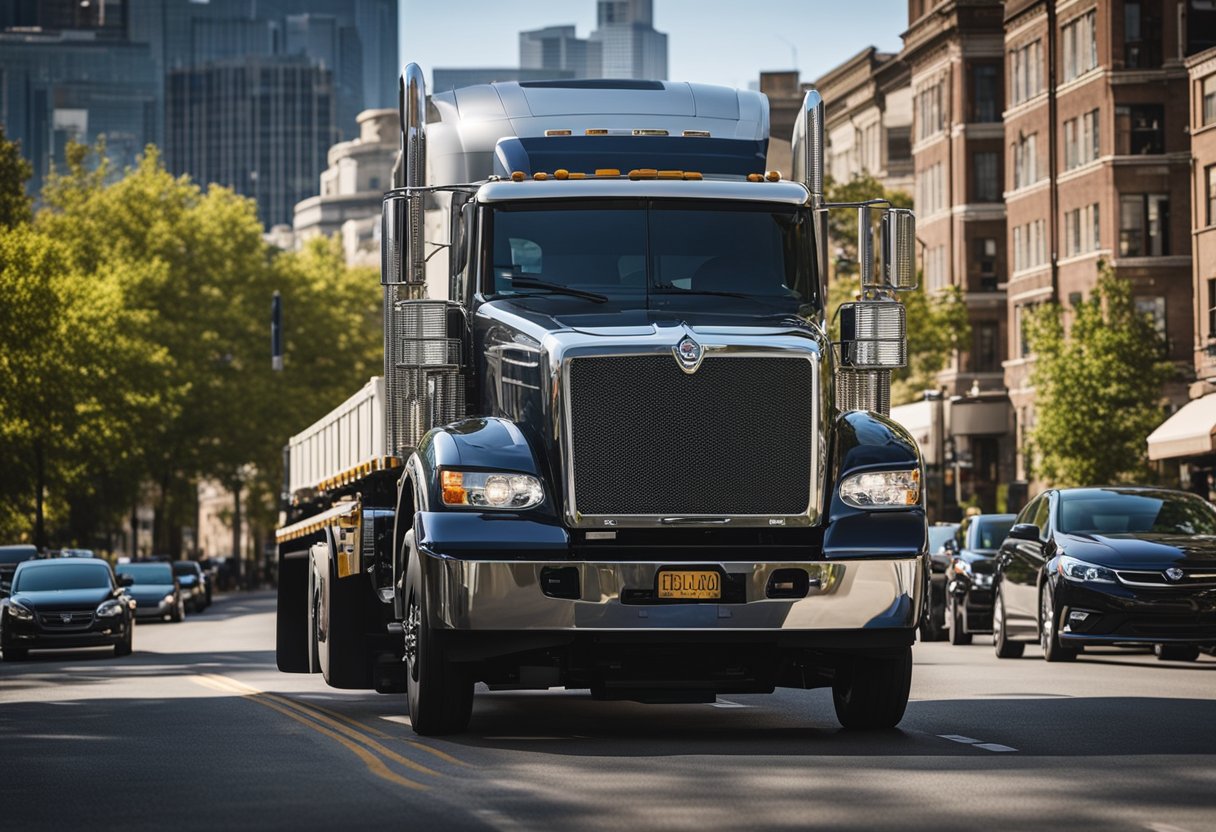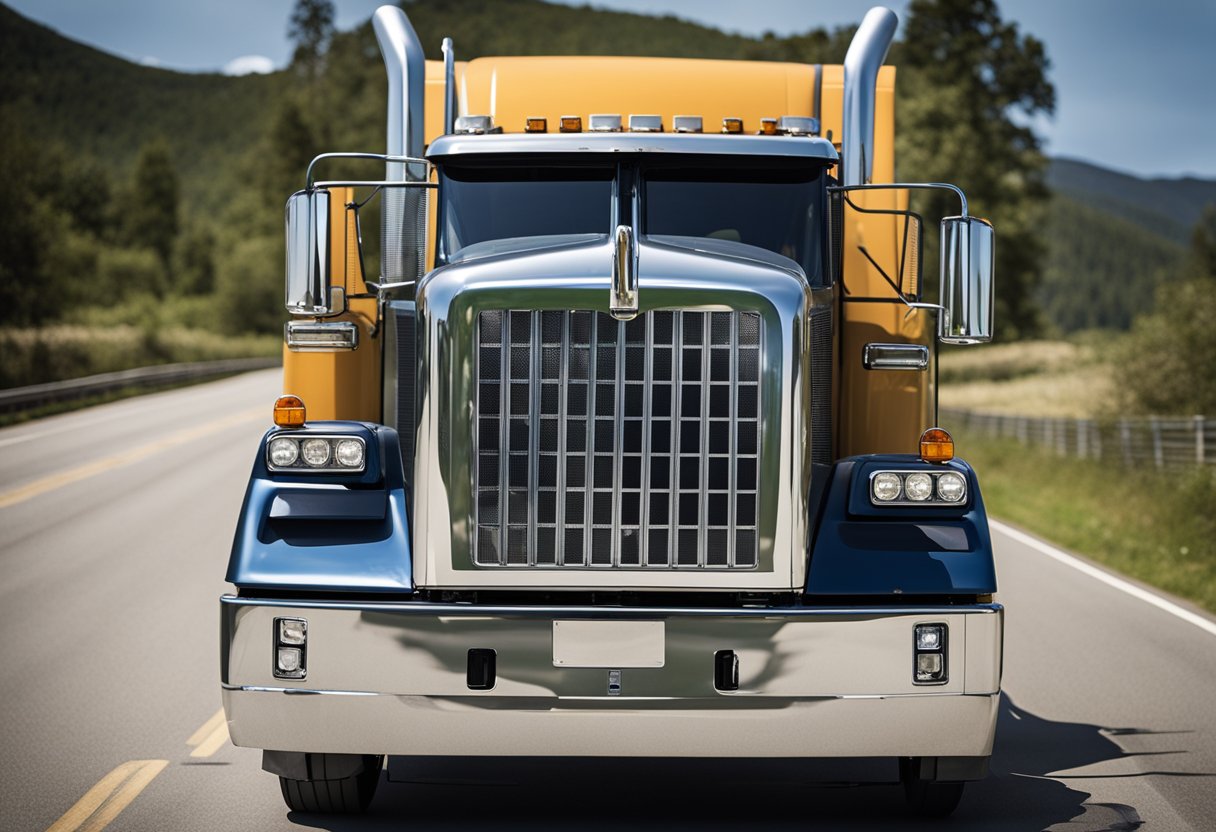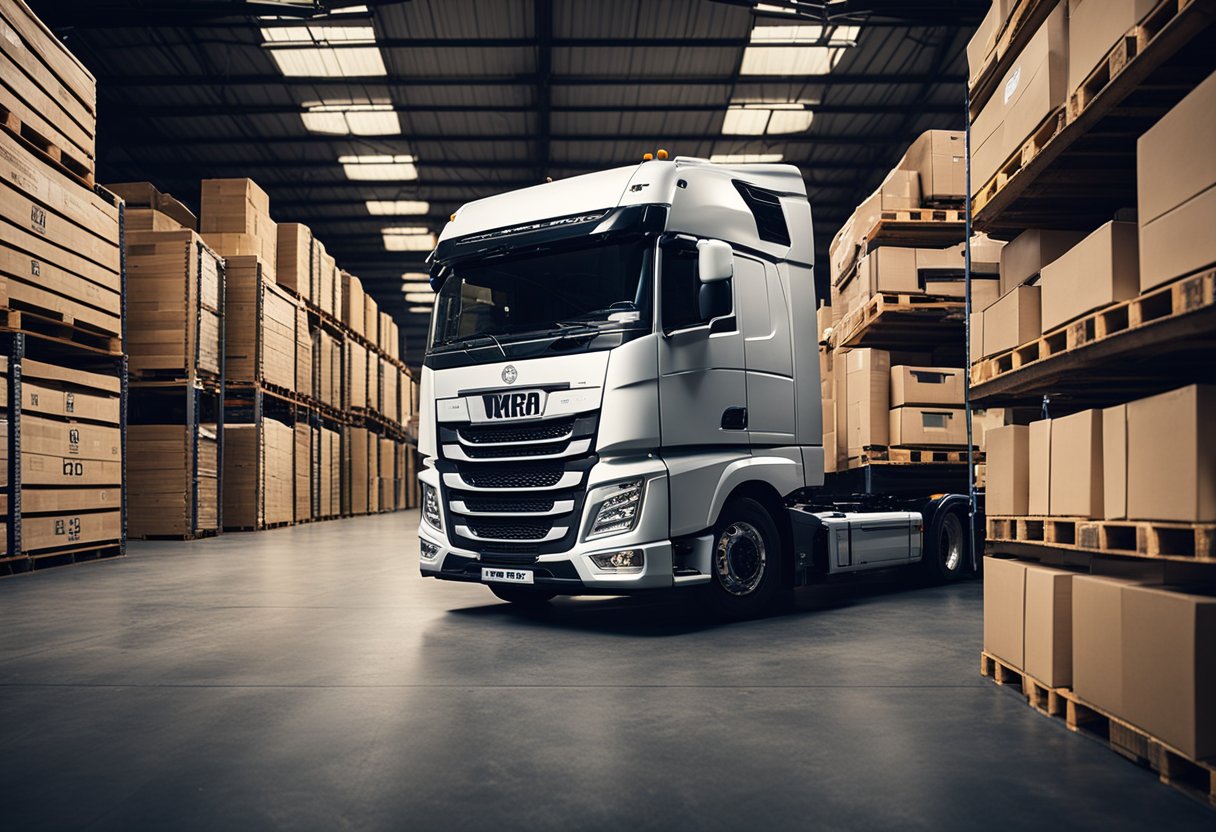In exploring the world of trucks, understanding the different classifications is crucial to making informed decisions whether for personal use or commercial operations. A Class 3 truck is a category within the larger system of truck classes, which is based primarily on the vehicle’s gross vehicle weight rating (GVWR). These trucks typically have a GVWR of between 10,001 and 14,000 pounds. This classification captures a range of vehicles that serve various purposes, from heavy-duty personal pickups to more robust commercial vehicles that require a driver to hold a specific type of license.

Class 3 trucks serve as a bridge between light-duty personal vehicles and the more industrious world of commercial transportation. They are versatile in function, often used for towing, delivery, or utility purposes. Their capabilities enable businesses to perform with greater efficiency, transporting larger amounts of goods or equipment than their lighter counterparts. Additionally, the regulations for operating a Class 3 truck differ from those for smaller or larger vehicles, balancing the need for accessibility with safety on the road.
Contents
Key Takeaways
- Class 3 trucks have a GVWR of between 10,001 and 14,000 pounds.
- They offer versatility for both personal and commercial use.
- Operating these trucks requires adherence to specific regulations.
Understanding Truck Classifications
https://www.youtube.com/watch?v=lU8_Mk8xJ8c&embed=true
In my examination of truck classifications, it’s crucial to discern the differences among the various classes defined by the Department of Transportation. These distinctions are based on factors like the Gross Vehicle Weight Rating (GVWR), which reflect the vehicle’s maximum operating weight including the truck itself, fuel, passengers, and cargo.
Comparison of Truck Classes
When comparing truck classes, it is important to understand that the class of a truck is determined by its GVWR. The classification system ranges from Class 1 to Class 8. Here is how they break down:
- Class 1: Trucks with a GVWR of 0 to 6,000 pounds.
- Class 2: These include trucks with a GVWR of 6,001 to 10,000 pounds.
- Class 3: Trucks in this category have a GVWR of 10,001 to 14,000 pounds. Typically, these include heavy-duty personal trucks or commercial vehicles.
- Class 4: These trucks have a GVWR of 14,001 to 16,000 pounds.
- Class 5: Class 5 trucks’ GVWR ranges from 16,001 to 19,500 pounds.
- Class 6: Trucks with a GVWR of 19,501 to 26,000 pounds fall under this class.
- Class 7: These trucks have a GVWR between 26,001 and 33,000 pounds.
- Class 8: The heaviest class, Class 8, includes trucks with a GVWR exceeding 33,001 pounds.
The vehicle categories in truck classifications start from light-duty (Class 1-3) to medium-duty (Class 4-6) and finally, heavy-duty (Class 7-8). Each class represents a group of trucks that are designed for different uses and capacities. For instance, a Class 3 truck might be perfect for a business that needs a durable vehicle for hauling equipment, while a Class 8 is more suitable for long-haul trucking that requires transporting substantial commercial goods across states.
Diving into Class 3 Trucks
https://www.youtube.com/watch?v=qfhZjAJCrZ0&embed=true
When I discuss Class 3 trucks, I’m delving into a world of powerful, heavy-duty vehicles that serve as a versatile option in the realm of transportation. They strike a balance between strength and maneuverability, which is pivotal in many industries.
Characteristics of Class 3 Trucks
Class 3 trucks are defined by a Gross Vehicle Weight Rating (GVWR) that ranges from 10,001 to 14,000 pounds. This measurement includes the weight of the vehicle itself plus its passengers, cargo, and any additional equipment. The heavy-duty frame and chassis of these trucks are designed to handle significant weight, making them sturdier and more durable than lighter classes. My examination shows that the body of these trucks can vary widely, from the traditional pickup style to utility bodies designed for specific jobs.
Typical Uses for Class 3 Trucks
A key aspect of Class 3 trucks is their versatility in application. They are commonly used as pickup trucks for hauling heavy loads, such as construction materials, and are also favored in commercial settings for transporting goods that are too bulky for smaller vehicles. Industries from farming to retail find these trucks essential due to their weight handling capabilities without venturing into more cumbersome and less maneuverable vehicle sizes.
Class 3 trucks provide robust performance for businesses and individuals needing a reliable workhorse that can tow and carry weighty loads with ease.
Class 3 Truck Regulations
https://www.youtube.com/watch?v=JEgZoXcFN5Q&embed=true
In the realm of commercial vehicles, a Class 3 truck is a designation that relates to its size and weight, falling under specific regulatory requirements. My focus will be on the licensing requirements and safety standards set for these vehicles.
Licensing Requirements for Class 3 Trucks
To legally operate a Class 3 truck, I must hold a valid Commercial Driver’s License (CDL). This license is mandatory for any vehicle with a Gross Vehicle Weight Rating (GVWR) between 10,001 and 14,000 pounds, which includes Class 3 trucks. The licensing process involves passing both written and skills tests, which cover pre-trip vehicle inspections, basic control of the vehicle, and road driving. States might have varying requirements, but at a minimum, I must adhere to Federal Motor Carrier Safety Administration (FMCSA) guidelines.
Safety Standards and Regulations
When it comes to safety standards, Class 3 trucks are subject to rigorous regulations to ensure road safety. Every Class 3 truck I operate must adhere to safety regulations that include regular maintenance checks, securing of cargo, and compliance with hours-of-service laws to prevent driver fatigue. Additionally, my truck must be equipped with necessary safety equipment, such as reflective markers and a Department of Transportation (DOT) number, if it is used for commercial purposes. These DOT number regulations help to track my compliance with vehicle safety standards.
Each of these regulatory and safety-focused areas are governed by both state and federal laws, and as an operator, staying informed and compliant is a critical aspect of my professional responsibilities.
Commercial Use and Capabilities
https://www.youtube.com/watch?v=hK8W4g_9WgM&embed=true
In my exploration of Class 3 trucks, their commercial use and capabilities stand out prominently. These vehicles serve as a backbone for varied industries, owing to their versatile cargo and towing capacities.
Cargo and Towing Capabilities
Class 3 trucks excel in moving substantial cargo loads and possess strong towing capabilities, designed to meet the demands of transportation and logistics. Towing maximums typically range up to 14,000 pounds, while payload capacities can be as high as 5,000 pounds. These trucks are commonly configured as:
- Dump trucks, for carrying loose materials.
- Box trucks, often seen in delivery and moving services.
- Rack trucks, suitable for carrying longer construction materials.
Their robust build allows for not just carrying weight but also ensures durability across various applications, from agriculture to city services.
Commercial Vehicle Designation
As I interpret the classification system, Class 3 trucks meet the criteria of commercial motor vehicles due to their weight ratings. Here’s how they stand:
- GVWR: Between 10,001 – 14,000 pounds
- Category: Generally, they fall into the medium-duty truck category.
Such weight designations permit these vehicles to operate commercially, delivering goods or providing services without surpassing the regulatory limits which would require special operational mandates. This designation makes them a preferred choice, bridging the gap between lighter-duty vehicles and the more cumbersome heavy-duty trucks.
[Ford] Class 3 Vehicles
https://www.youtube.com/watch?v=kQbNHYhquwM&embed=true
In my expertise, Ford Class 3 vehicles are renowned for their durability and capability, particularly within the commercial sector where robustness is non-negotiable.
Popular Models and Configurations
- Ford F-250:
- Usage: Ideal for heavy-duty tasks, often seen on construction sites.
- Engine Options: Variety of powertrains including the Power Stroke® V8 Turbo Diesel.
- Ford F-350:
- Usage: Designed for extreme towing, found in both commercial fleets and for personal use.
- Configurations: Available in single-rear-wheel (SRW) or dual-rear-wheel (DRW) for enhanced stability and payload capacity.
It’s clear that these Ford Class 3 trucks are built to haul heavy loads and perform in high-demand situations. The Ford F-250 and F-350 models are often equipped with advanced features such as Trailer Reverse Guidance and high tow ratings, highlighting their utility in scenarios where power and precision are essential. My focus is to convey the dependability and strength that Ford embeds into their heavy-duty trucks. These vehicles not only meet but frequently exceed expectations, whether it’s for managing rigorous work duties or for transporting sizeable payloads.
Operating and Ownership Considerations

When I consider operating and owning a class 3 truck, a core part of my focus is on the details that affect the bottom line – specifically, maintenance needs and associated costs, along with the intricacies of permits and regulations that govern truck operations.
Maintenance Needs and Costs
Maintenance is paramount to keeping my class 3 truck in optimal condition. The costs usually vary based on several factors like mileage, truck model, and type of hauling jobs I take on. I keep a regular maintenance schedule which typically includes engine checks, tire rotations, brake inspections, and fluid replacements. For a class 3 truck, significant reparations can be costlier than standard vehicles due to their industrial components. I always factor in the unpredictability of these expenses into my financial planning.
Engine maintenance and oil changes are more frequent compared to light-duty vehicles, given that the engines are larger and work under more strenuous conditions. I expect tire replacement to be more expensive, but less frequent, as long as I maintain proper tire pressure and alignment. I also anticipate additional costs for specialized parts and servicing that are unique to class 3 trucks. Compliance with the Federal Motor Carrier Safety Administration (FMCSA) regulations requires me to maintain detailed records of all maintenance activities.
Permits and Overload Regulations
Before hitting the road, I ensure all permit requirements are met, which can be extensive for class 3 trucks, depending on the hauling job. The process can get complex since it might require not only state but also local or federal permits, especially if I’m involved in interstate transportation.
Hauling with class 3 trucks is highly regulated, so I am mindful of overloading regulations. To avoid penalties or damage to my truck, I stay within the legal weight limits. This may involve making trips to weigh stations to confirm that the load is within legal limits. Adhering to hours of service regulations is critical to safety and compliance, as these rules govern how long I can operate my truck without taking a mandated rest.
By maintaining a rigorous adherence to these details, I uphold the efficiency and legal operation of my class 3 truck, ultimately contributing to a sustainable business model.
Advanced Topics in Class 3 Trucks
https://www.youtube.com/watch?v=ldiWddvOdE4&embed=true
As we explore the advanced dimensions of Class 3 trucks, I’ll focus on highlighting key innovations in truck design and discuss the significance of fuel efficiency and environmental impacts of these heavy-duty vehicles.
Innovations in Heavy-Duty Truck Design
My exploration begins here with groundbreaking designs in Class 3 trucks. These vehicles, such as the GMC Sierra 3500, Ram 4500, and Ram 5500, have led the charge in integrating high-tech features. Notably, sleeper cabs have evolved to offer enhanced comfort and ergonomics for long-haul efficiency. Here’s a quick comparison:
- GMC Sierra 3500: Advanced trailering system
- Ram 4500/5500: Upfit-friendly chassis with versatile configurations
- Ford F-750: Robust powertrain options for varied heavy-duty applications
Each of these models exemplifies the strides manufacturers have taken to augment safety, drivability, and versatility in heavy-duty truck design.
Environmental Impact and Fuel Efficiency
Now, turning to environmental considerations, I observe that Class 3 trucks are increasingly being judged by their fuel efficiency metrics due to both economic and ecological reasons. The deployment of newer, more efficient fuel systems is central to this advancement. For instance, technologies such as turbocharging and advanced diesel engines have improved the fuel efficiency of heavy-duty trucks, making them more cost-effective and environmentally friendly. Here’s a snapshot of fuel efficiency improvements:
- Turbocharging: Boosts engine efficiency, directly enhancing fuel economy.
- Diesel Engine Advancements: Lower emissions and better fuel economy.
As regulations tighten and the cost of fuel fluctuates, these improvements are not only beneficial; they are becoming necessary for industry sustainability. My attention to these factors reflects an ongoing commitment to reducing the carbon footprint of Class 3 trucks while maintaining their critical role in the transportation sector.
Conclusion

In this article, we’ve explored the specifics of what defines a Class 3 truck. As a reminder:
- Gross Vehicle Weight Rating (GVWR): Between 10,001 and 14,000 pounds.
- Common Uses: These trucks serve in various industries, including construction and delivery services.
I’ve discussed the versatility and utility that make Class 3 trucks a popular choice. They can be easily customized with different bodies such as flatbeds, utility, and service bodies to meet diverse needs.
For businesses requiring moderate hauling capabilities without the heavier regulations of larger trucks, Class 3 trucks strike a balance. It’s important to note their fuel efficiency, which generally surpasses that of higher-class vehicles, potentially offering cost savings.
For any enterprise considering a Class 3 truck, I’ve highlighted factors to consider, such as:
- Cargo Size: Ensuring the cargo fits within weight limits.
- Maneuverability: Ideal for navigating urban environments.
- Regulatory Requirements: Generally less stringent than for bigger trucks.
Considering these elements will guide you in determining if a Class 3 truck is the right fit for your professional needs.
Frequently Asked Questions
https://www.youtube.com/watch?v=xe8hdjbDBYs&embed=true
In the classification of commercial trucks, a Class 3 truck represents a specific category defined by its gross vehicle weight rating (GVWR). These are the details that often come up when understanding the capabilities and specifications of Class 3 trucks.
How much weight can a Class 3 truck typically carry?
A Class 3 truck can typically carry a GVWR ranging from 10,001 to 14,000 pounds. This weight includes the vehicle itself as well as the cargo and passengers.
What distinguishes a Class 3 truck from a Class 4 truck?
The key difference between Class 3 and Class 4 trucks lies in their GVWR; Class 3 trucks have a GVWR of 10,001 to 14,000 pounds, whereas Class 4 trucks have a GVWR that ranges from 14,001 to 16,000 pounds.
Can you provide examples of vehicles classified as Class 3 trucks?
Examples of Class 3 trucks include the Ford F-350, Chevrolet Silverado 3500, and the Ram 3500. These vehicles are commonly used for heavier duty tasks that fall within the Class 3 weight range.
What are the primary uses for Class 3 trucks?
Class 3 trucks are widely used for towing substantial loads, delivery of goods, and are often outfitted as utility trucks for services such as construction or landscaping, thanks to their robust carrying capacity and power.
How do Class 2 trucks differ from Class 3 trucks in terms of specifications?
Class 2 trucks have a GVWR of 6,001 to 10,000 pounds which is less than that of Class 3 trucks, making Class 2 trucks suitable for lighter duties and less demanding tasks in comparison.
What are the general features of Class 3 vehicles in the truck classification system?
Class 3 trucks generally feature powerful engines, heavy-duty chassis, and dual rear wheels to support the greater weight they are designed to carry. They are integral to industries that require the transportation of heavy equipment or sizable amounts of cargo.

